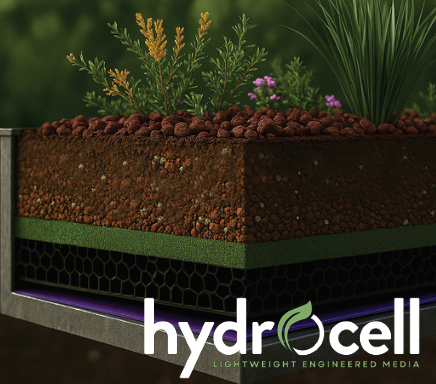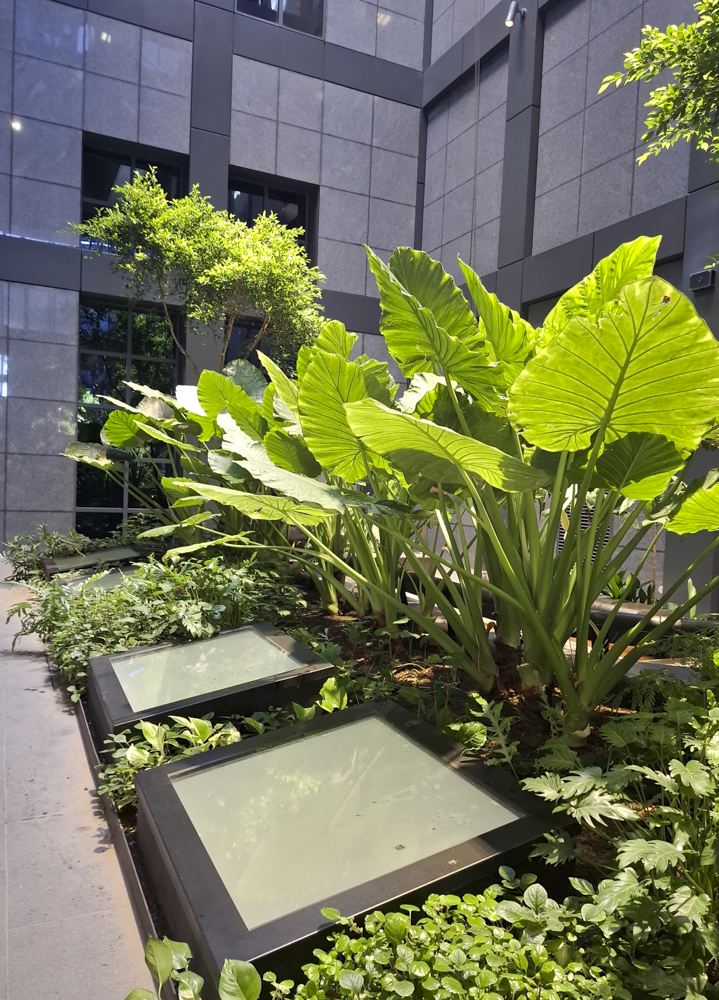
The Hidden Foundation of Thriving Elevated Gardens
Beneath every flourishing rooftop garden and vibrant planter box lies a secret that determines its fate: not the plants you see, but the substrate you don’t.
Across Australia, building owners and facility managers are discovering a harsh reality: their once lush elevated gardens are literally disappearing. Plants that stood proudly at installation now slump below planter edges, their roots compressed in diminishing soil volumes.
What seemed like a sensible choice, using traditional organic based roof garden media, has become an expensive lesson in the unique demands of living architecture.
The Slumpage Crisis: When Gardens Sink!
Research[*1] demonstrates that organic-based roof garden media typically loses 10-30% of its initial volume within the first three years
This dramatic volume loss, known as media settlement or slumpage, occurs as organic components like composted pine bark, coir and compost decompose. The consequences extend far beyond aesthetics:
- Root compression, as organic media decompose into smaller particles, reducing air-filled pore size between particles, leads to anaerobic conditions and the eventual suffocation of plant roots, especially just above the Geofabric layer.
- Reduced drainage, caused by reduced pore space volumes and a buildup of moisture-retentive organic materials, creates waterlogging during heavy rainfall events or standard irrigation cycles as the drainage capacity of substrates steadily reduces as organics decompose over time
- Unstable substrate chemistry develops as substrates lose the ability to breathe, anaerobic conditions cause cascading acidity, soil microbiology dies, substrate sourcing ensues and a cascading effect of cumulative decompositions and substrate structure increases
- Loss of thermal and acoustic insulation compromises building performance due to persistently wet substrates or limited air-exchange capacity, increases heat loss and gain, thus reducing the ability to insulate
- Structural concerns may arise as uneven settlement stresses waterproofing membranes, increasing waterlogging, potential of flooding, overflowing and damage to surrounding infrastructure
- Major remediation costs arise once media slump occurs, as the plant crown sinks below the planter edge, making simple top-ups not feasible. The entire substrate profile becomes compacted and structurally compromised, and drives major remediation costs—often involving full garden reconstruction—alongside plant losses, turning initial savings into a long-term financial burden.

A WORD FROM FYTOGREEN's
IN-HOUSE BOTANIST
"Erik van Zuilekom"
Within this blog, we will explore the in-depth requirements and expertise necessary to provide sustainable greening for 2020 and beyond.
Follow Erik on Instagram –
United Natures Design
If you have a specific topic your would like covered by Erik or have any comments, please email lisa@fytogreen.com.au
Example of Media Settlement - Melbourne, CBD – October 2025
Walk-through Melbourne, multiple planter boxes were observed with significant media settlement.
This subsidence exposed liners and irrigation hardware, compromising aesthetics and plant health.


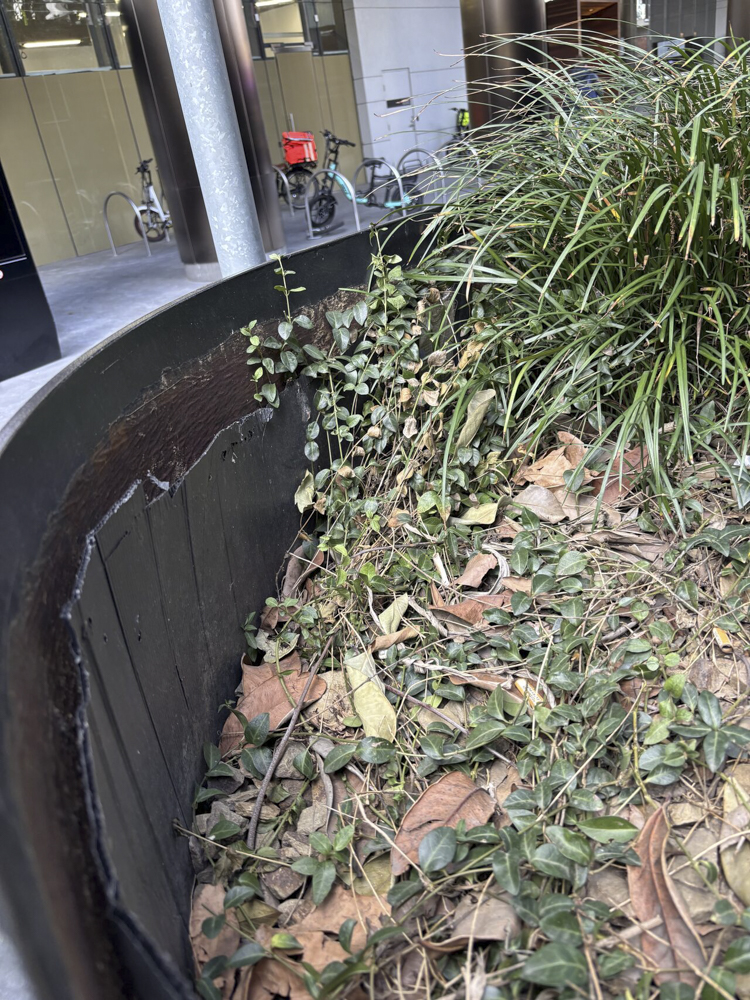
Consider the cascade of failures:
as organic matter decomposes, pore spaces collapse.
What begins as a well-aerated substrate transforms into a compacted mass. The reduction in air-filled porosity triggers anaerobic conditions, promoting root pathogens and chemical souring. Plants struggle to access oxygen, leading to their metabolic processes becoming compromised. The substrate’s water-holding capacity becomes erratic, alternating between waterlogging and drought stress.
The financial impact is sobering. As noted in Fytogreen’s case studies, whilst the initial cost difference between specialist engineered media and organic alternatives might be approximately $35 per square metre, the repair bill after slumpage can reach $1,000 per square metre: nearly 30 times the initial “savings.” This doesn’t account for the intangible costs: damaged reputation, tenant dissatisfaction, and the environmental impact of premature garden failure.

Learning from History: The Mineral Advantage
The solution to modern green infrastructure challenges lies, paradoxically, in ancient wisdom. Viking era roof gardens, dating back over a millennium, utilised roof garden substrates comprising a majority of mineral components, provided stability for decades without modern interventions.
These traditional systems, which influenced modern and long-standing German green roof standards, demonstrate that mineral-based substrates can maintain structural integrity for 20-50 years and potentially beyond.
These long-lived mineral-based substrate mixes represented something fundamental: mineral substrates create a stable scaffold for biological processes. Their sod roofs, incorporating traces of clay, sand, and gravel within the growing media, provided both drainage and structure. These roofs didn’t just survive; they evolved into living ecosystems that improved with age.
Contemporary European research[*2] validates this approach. Studies of German green roofs installed in the 1980s show that substrates containing high mineral content maintain 70-90% vegetation cover after 30+ years, with minimal volume loss (<2cm settlement over 20 years).
Technologies and understanding have allowed us to refine this process by incorporating lighter-weight components to achieve similar results. Understanding the basic structural performance allows us to engineer stable substrates that integrate with modern architecture.
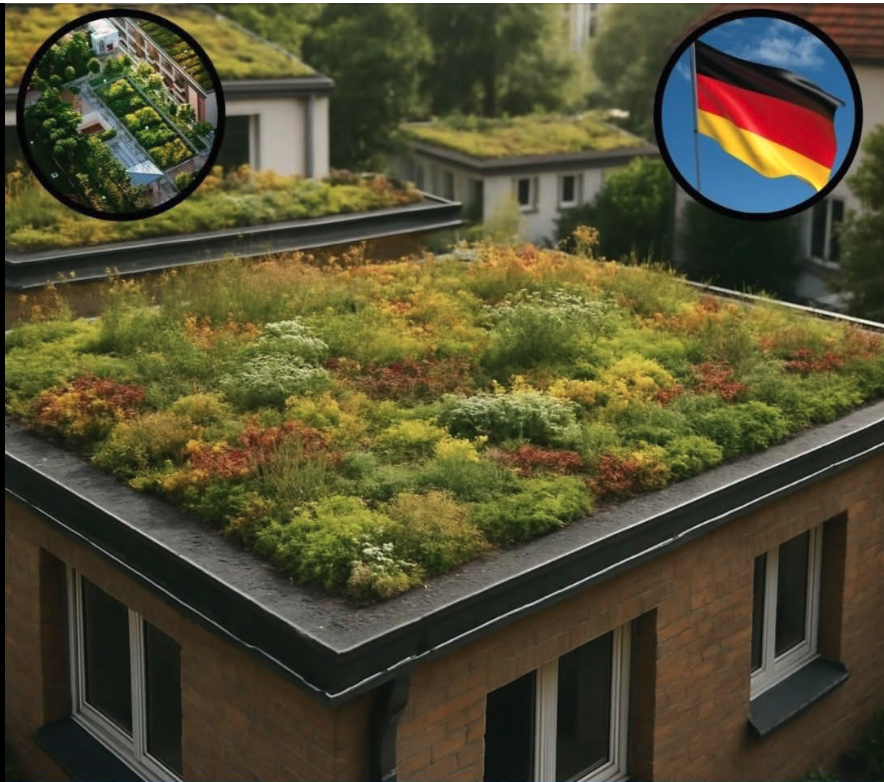
THE SCIENCE BEHIND FYTOGREEN’S HY40 ENGINEERED MEDIA
Fytogreen’s Hydrocell 40 Lightweight Engineered Media represents 23 years of refinement in Australian conditions. This mineral dominant composition delivers critical performance metrics:
• Saturated Hydraulic Conductivity: >150 mm/hr Tested at 32 drops. (prevents waterlogging) .
• Total Porosity: >60% (maintains root aeration)
• Air Filled Porosity: >32% (crucial for healthy root systems & stable redox reactions)
• Capillary Porosity: >28% (ensures water availability)
• Volumetric Water Content at 30cm: >30 (sustains plants between irrigation)
The precision of these specifications isn’t arbitrary. Each parameter represents decades of refinement, balancing competing demands. High hydraulic conductivity ensures rapid drainage during intense rainfall events, whilst sufficient capillary porosity maintains plant available water between irrigation cycles. The angular particle geometry of scoria and clinker ash creates interlocking structures that resist compaction whilst maintaining optimal pore distribution.
With over 900,000m² installed across Australia since 2004, HY40 has proven its stability across diverse applications: from 120mm extensive roof gardens to 945mm+ intensive plantings supporting large trees.
Beyond Structure: Thermal and Acoustic Performance
The benefits of mineral-based engineered media extend beyond structural stability. Research demonstrates that substrates with lower density and higher air content provide superior thermal insulation, as air is a poor conductor of heat
HY40’s engineered porosity creates millions of insulating air pockets, reducing heat transfer through the building envelope.
In practical terms, green roofs with mineral substrates consistently reduce internal building temperatures by 2-6°C up to 15°C, and roof surface temperatures by 10-30°C up to 33°C, compared to conventional roofs. [*3]
Similarly with keeping heat inside buildings during cooler conditions, by reducing heat loss by 25-34% through radiation loss and up to 50% heat loss by wind-related heat loss.
During Australian summers, this translates to significant energy savings. The thermal mass of mineral particles buffers temperature fluctuations, whilst the high porosity maintains insulation even when saturated. Unlike organic substrates that lose insulation capacity when waterlogged, mineral media maintains performance across varying moisture conditions.
Acoustic benefits complement thermal performance. The substrate and vegetation layers absorb and scatter sound waves, with mineral-based substrates providing measurable noise reduction
In urban environments where traffic and construction noise impact livability, properly specified roof gardens create quiet sanctuaries. The multi-layered structure of substrate, drainage, and vegetation creates multiple impedance boundaries that dissipate sound energy.
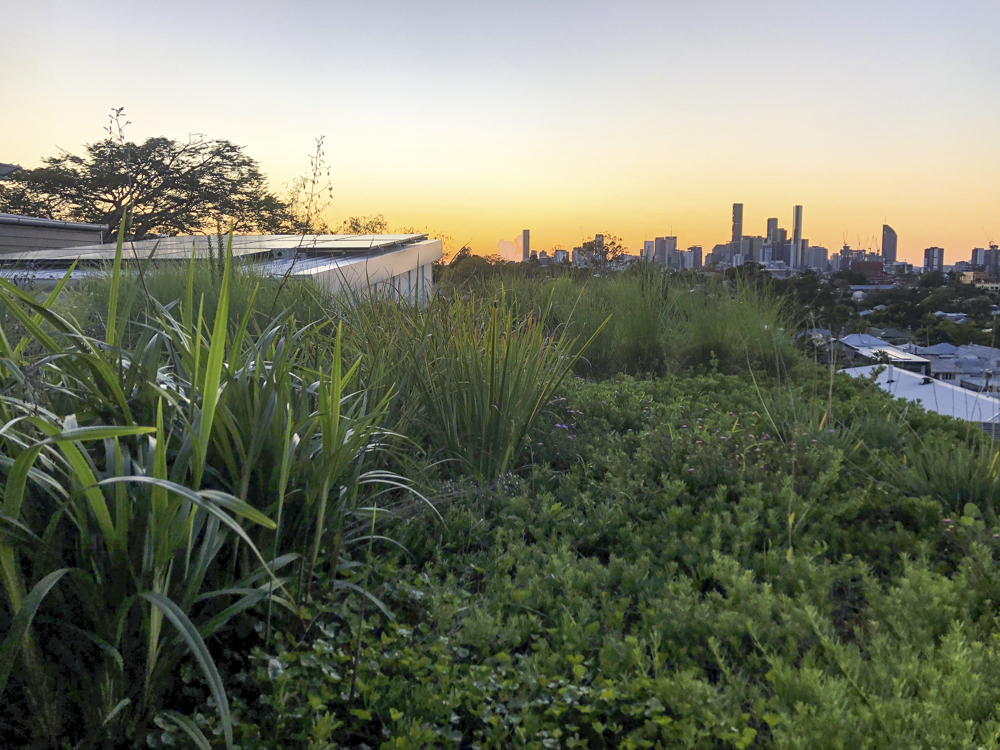
Demand Specialist Solutions
The fundamental challenge of elevated living architecture lies in adapting terrestrial ecologies within dramatically reduced soil volumes. Unlike in-ground gardens, where roots can explore deep soil profiles, podium gardens must sustain plant communities within confined depths whilst managing:
• Extreme temperature fluctuations without the thermal buffering of a direct connection with terrestrial soils
• Rapid moisture loss through increased surface area exposure
• Wind exposure that creates additional evapotranspiration stress
• Weight limitations restricting substrate depth
• Drainage requirements preventing structural damage and performance during extreme weather events
Traditional horticultural approaches, developed for nursery production or in-ground landscapes, often fail to comprehend these unique constraints. The potting media industry’s attempts to create “roof garden mixes” frequently result in high organic formulations that perform well initially but degrade rapidly under living architecture conditions. The definition of ‘long-term’ is relative to the application, with general horticultural use of substrates often requiring longevities far below the requirements of living architecture applications, such as planterboxes, green faces on podiums and green roofs.
Consider the thermal dynamics: in ground soil benefits from the stable temperature of the earth’s mass below. Elevated substrates experience temperature swings exceeding 40°C daily during summer. Organic matter accelerates decomposition under these conditions, whilst mineral particles remain stable. The shallow profile amplifies every stress, demanding substrates engineered for extremes rather than average conditions.
Predictable Performance Across All Conditions
ONE OF THE HY40 MEDIA MIX’S KEY ADVANTAGES IS ITS CONSISTENT, PREDICTABLE BEHAVIOUR ACROSS VARYING DEPTHS AND CLIMATE ZONES. THE ENGINEERED PARTICLE SIZE DISTRIBUTION ENSURES:
IRRIGATION PREDICTABILITY
Unlike organic media, where decomposition alters water holding capacity over time, the HY40 media mix maintains stable hydraulic properties. This allows for programmed irrigation schedules that remain accurate season after season, preventing both drought stress and waterlogging, which are common causes of plant failure in elevated gardens.
Laboratory studies[*5] confirm that mineral substrates maintain consistent hydraulic conductivity over time, whilst organic media show declining performance as decomposition progresses. This predictability transforms irrigation from guesswork to science, enabling precise water delivery that matches plant requirements without waste.
STRUCTURAL INTEGRITY
The angular scoria and clinker ash particles interlock to provide excellent shear strength on sloped surfaces whilst maintaining optimal pore space. This stability is crucial for:
• Elevated garden and trafficable gardens where the substrates must resist compaction via maintenance access. Human-contact attrition is a vital consideration for long-term substrate stability.
• Sloped roof gardens requiring erosion resistance
• Multi-level planter systems where settlement could compromise drainage
• Extreme rainfall, wind resonances and impacts of urban traffic resonances that may cause settling, separation and compaction of substrates over extended periods of exposure. It is easy to forget that over time, small vibrations are cumulative, similarly to erosion. A dripping tap may cause a hole in grout between pavers, and by extension, substrate particles may vibrate and settle into resonance-induced patterns.
CLIMATE ADAPTABILITY
Regional formulation variations ensure optimal performance whether managing:
• Tropical deluges in Queensland
• Mediterranean dry summers in South Australia
• Temperate four season variability in Victoria
• Frost exposure in elevated Tasmanian installations




THE LIVING SUBSTRATE: MICROBIAL NETWORKS & BIOLOGICAL ACTIVATION
Looking forward, the next evolution in engineered media involves activation as biologically diverse ecosystems. Recent research[*6] reveals that mineral substrates provide ideal habitat for beneficial microorganisms, particularly mycorrhizal fungi and symbiotic bacteria that form extensive underground networks facilitating nutrient exchange
• Porous scoria creates aerobic and anaerobic microsites supporting diverse microbial communities
• Stable mineral structure allows organic matter to accumulate gradually through natural processes
• Mineral surfaces provide attachment sites for biofilms that enhance nutrient cycling
• pH buffering from mineral components maintains conditions favourable for symbiotic organisms and reduces the onset of acidification from ageing substrates and the impacts of long-term exposure to acid rain and urban pollutants.
Arbuscular mycorrhizal fungi (AMF) extend plant root systems through hyphal networks, accessing nutrients in mineral micropores inaccessible to roots alone.
Studies show AMF inoculation in green roof substrates improves plant growth by 30-50% whilst reducing fertiliser requirements.
The fungal hyphae create aggregates that improve substrate structure, whilst associated bacteria form protective biofilms that cycle nutrients and suppress pathogens.
This biological activation transforms engineered media from mere growing medium into living substrate that:
• Enhances plant resilience through mycorrhizal networks
• Improves nutrient availability via bacterial rhizophagy cycles
• Increases water holding capacity through microbial polysaccharides
• Develops disease suppression through competitive exclusion
The implications are profound. Rather than viewing substrate as inert material, we recognise it as the foundation of a living ecosystem. Mineral particles provide the stable scaffold, whilst biology creates the dynamic processes that sustain plant communities. European studies[*7] of decades old green roofs demonstrate that mineral based substrates can actually increase in organic content over time through natural accumulation, whilst maintaining structural integrity: creating self improving systems that become more productive with age. This is only possible if substrates are appropriately engineered to maintain a stable structure, air-filled porosity, redox capacity and performance.



WATER DYNAMICS: THE CRITICAL BALANCE
Water management in elevated gardens requires understanding the complex interplay between substrate physics and plant physiology. The HY40 substrate mix’s engineered porosity creates three distinct water-management capabilities:
1. Gravitational water drains rapidly through macropores (larger pore sizes), preventing waterlogging.
2. Capillary water is held in mesopores (smaller pores) and remains plant available.
3. Hygroscopic water is bound to particle surfaces, provides a drought buffer.
This tri-modal distribution ensures plants access water whilst maintaining essential aeration. Research demonstrates that laboratory tests of substrate properties often fail to represent actual field performance, highlighting the importance of real-world validation.
Fytogreen’s two decades of monitoring confirm the HY40 substrate mix’s water dynamics remain stable over time, unlike organic media, where decomposition creates unpredictable changes.
The capillary rise within the HY40 substrate mix extends moisture availability throughout the substrate profile, crucial for shallow installations where every millimetre counts. Sub-surface drip irrigation exploits this property, delivering water directly to the root zone whilst maintaining dry surface conditions that discourage weed germination and fungal diseases.
MAKING THE RIGHT CHOICE
For architects, developers, & building owners, the choice of growing media represents a critical decision point that will impact:
• Long-term maintenance budgets
• Plant establishment success
• Building performance benefits
• Warranty compliance
• Aesthetic longevity
Specifying engineered media like the HY40 substrate mix isn’t about choosing the premium option; it’s about understanding that green infrastructure operates under fundamentally different principles compared to ground-level landscaping. Just as you wouldn’t use residential carpet in a commercial tower lobby, using organic based roof garden media in elevated gardens ignores the unique demands these installations face.
The decision extends beyond technical specifications to encompass project lifecycle considerations. Initial installation represents perhaps 10% of the total project investment over 20 years. Maintenance, replanting, and potential remediation constitute the remainder. Engineered media dramatically reduces these ongoing costs, and the risk of needing complete replacement whilst delivering superior performance.
THE AUSTRALIAN CONTEXT:
UNIQUE CHALLENGES AND TAILORED SOLUTIONS
Australia’s climatic extremes demand substrates engineered for resilience. From tropical cyclones to temperate climate frosts, from desert heat to coastal humidity, our lgreen infrastructure faces challenges unknown in milder climates.

The HY40 substrate mix’s regional formulations acknowledge these realities, optimising performance for local conditions whilst maintaining core stability principles.
Consider Melbourne’s four seasons in one day phenomenon: substrates must handle rapid temperature swings, sudden deluges, and desiccating winds. Or Brisbane’s subtropical intensity, where summer storms deliver monthly rainfall in hours. These aren’t edge cases; they’re regular occurrences that organic media simply cannot contend with over the long term.
Fytogreen’s commitment to Australian manufacturing ensures quality control and regional customisation that is impossible with imported products. Local sourcing reduces carbon footprint whilst supporting circular economy principles. Recycled materials like clinker ash transform industrial byproducts into ecological assets.
Conclusion: Investing in Invisible Performance
The most critical component of successful green infrastructure is the one you’ll never see once plants establish. Engineered media provides the stable foundation that allows elevated gardens to thrive rather than merely survive, delivering on the promise of green infrastructure for decades rather than years.
As we continue pushing the boundaries of urban greening, creating gardens on podiums, facades, and rooftops, we must match our ambitions with substrates engineered for these challenging environments. The true cost of media isn’t measured at installation but across the lifetime of the garden. When that perspective is adopted, the value of properly engineered substrates becomes undeniable.
For those seeking to create lasting green infrastructure that enhances buildings whilst supporting thriving plant communities, the substrate decision is clear: mineral-based engineered media isn’t just an option; it’s an essential investment to achieve success.
The future of green infrastructure depends on recognising that living architecture isn’t simply elevated horticulture. It’s a distinct discipline requiring specialised materials, deep ecological understanding, and commitment to long-term performance.
Fytogreen’s HY40 substrate mix represents this evolution: from seeing substrate as a mere growing medium to understanding it as the foundation of living ecosystems that enhance our built environment.
Long-Term Success Stories backed by Visual Evidence
Fytogreen’s HY40 Engineered Media isn’t just designed for success—it’s proven in the field.
Below are various case studies showcasing installations from 2021 through 2025, demonstrating consistent structural integrity and plant health with no signs of slumpage.
PRIVATE RESIDENCE - BEAUMARIS, VIC - ROOF GARDEN

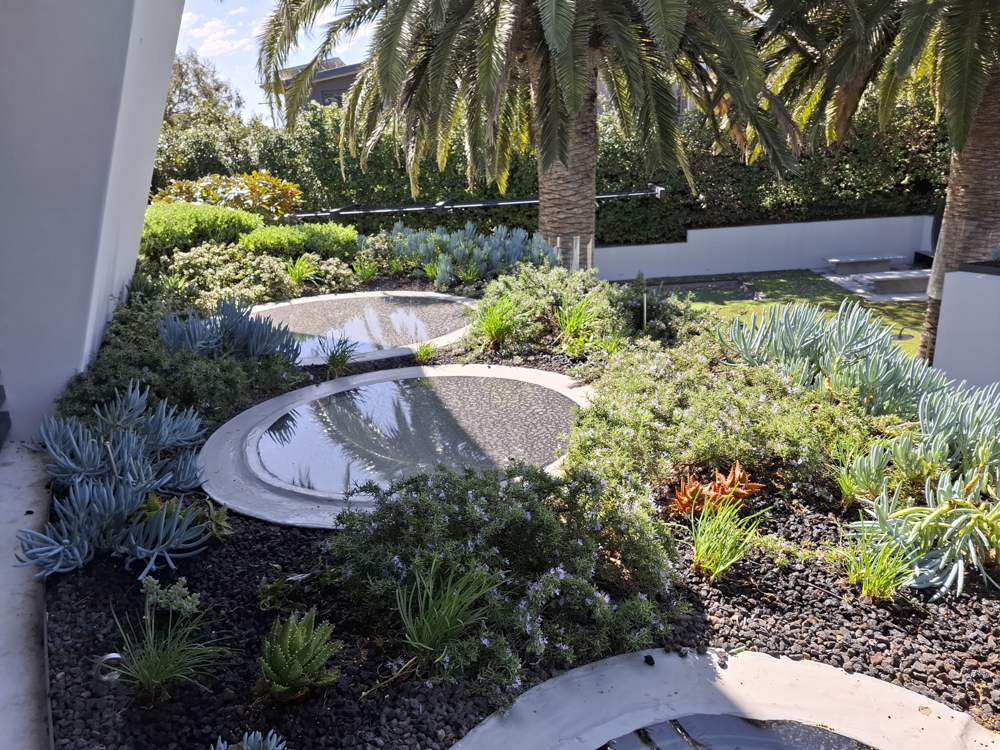
189 FLINDERS STREET, MELBOURNE - ALUMINIUM PLANTER BOXES


LEVEL 7, 380 LONSDALE STREET, MELBOURNE - BLOCKWORK PLANTERS


REFERENCES:
[*1] Ampim, P.A.Y., Sloan, J.J., Cabrera, R.I., Harp, D.A., & Jaber, F.H. (2010). Green roof growing substrates: Types, ingredients, composition and properties. Journal of Environmental Horticulture, 28(4), 244-252.
[*2] FLL (Forschungsgesellschaft Landschaftsentwicklung Landschaftsbau). (2018). Guidelines for the Planning, Construction and Maintenance of Green Roofing. Bonn, Germany: FLL.
[*3] Pisello, A.L., Piselli, C., & Cotana, F. (2015). Thermal-physics and energy performance of an innovative green roof system: The Cool- Green Roof. Solar Energy, 116, 318-336.
[*4] Santamouris, M. (2014). Cooling the cities – A review of reflective and green roof mitigation technologies to fight heat island and improve comfort in urban environments. Solar Energy, 103, 682-703.
[*5] Szota, C., Fletcher, T., Desbois, C., Rayner, J., Williams, N., & Farrell, C. (2017). Laboratory Tests of Substrate Physical Properties May Not Represent the Retention Capacity of Green Roof Substrates In Situ. Water, 9(12), 920.
[*6] McGuire, K.L., Payne, S.G., Palmer, M.I., Gillikin, C.M., Keefe, D., Kim, S.J., ... & Fierer, N. (2013). Digging the New York City skyline: Soil fungal communities in green roofs and city parks. PLoS One, 8(3), e58020. Chen, J., Wang, P., & Li, S. (2025). Arbuscular mycorrhizal fungi as core engineers in synthetic microbial communities for sustainable agriculture and urban green infrastructure. Journal of Fungi, 11(1), 89. Fulthorpe, R., MacIvor, J.S., Jia, P., & Yasui, S.-L.E. (2018). The Green Roof Microbiome: Improving Plant Survival for Ecosystem Service Delivery. Frontiers in Ecology and Evolution, 6, Article 5. https://doi.org/10.3389/fevo.2018.00005
[*7] Emilsson, T. (2008). Vegetation development on extensive vegetated green roofs: Influence of substrate composition, establishment method and species mix. Ecological Engineering, 33(3-4), 265-277. Thüring, C., & Dunnett, N. (2014). Vegetation composition of old extensive green roofs (from 1980s Germany). Ecological Processes, 3, Article 4.


